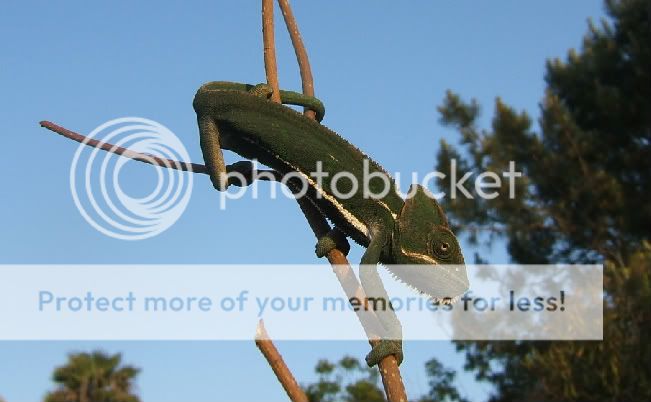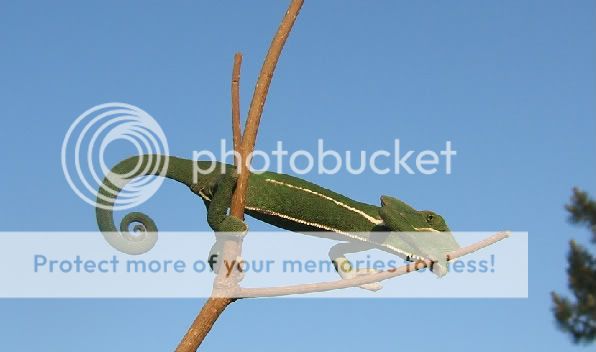Kent67
Retired Moderator
I've decided to start this thread to document the raising of a little female veiled chameleon that I picked up about three weeks ago. Although I've raised many chameleons of quite a few species over the years, I was never drawn to veileds because by the time they became available on the market I had already been (what I considered to be) successful with a number of other species and veileds were already known as "mean, but easy." The adult male I took in last year and Ofelia are my first two veileds.
What has always bothered me about the veileds is how often we see them with cases of MBD. Why? They grow fast, but, that fast?? Are they vastly different from all the other chameleons I've kept? Or, just due to how many more of them are sold that more MBD cases in this species are seen in the forums? Well, I've decided I want to find out for myself.
I hadn't given her any supplementation for the first week or so and then came up with the idea that I'm going to raise Ofelia without any vitamin or mineral supplemention/dusting. No Herptivite, no Rep-Cal, no Minerall....nothing. I assume she was getting some supplementation of this stuff before I received her but she still has plenty growing left to do so I think this will be interesting to see the results. Also, as a few of you know, I have never purchased a UVB bulb in my life and don't intend to (for chameleons, anyway). She will, however, have access to unfiltered sunlight most days. She will also be fed a varied diet of insects that have been fed a high quality diet prior to being offered to her. I expect to see a healthy, normal growth for her even without the extra calcium, vitamins, minerals, etc that are always recommended via supplementation dusts.
Should I add a "Kids, dont try this at home" disclaimer?
April 2 fresh out of the box:

April 24 a couple minutes ago:



Obviously I will start dusting with calcium if I see any problems whatsoever but I'm not expecting to need to. Will update this thread with pictures as she grows....
What has always bothered me about the veileds is how often we see them with cases of MBD. Why? They grow fast, but, that fast?? Are they vastly different from all the other chameleons I've kept? Or, just due to how many more of them are sold that more MBD cases in this species are seen in the forums? Well, I've decided I want to find out for myself.
I hadn't given her any supplementation for the first week or so and then came up with the idea that I'm going to raise Ofelia without any vitamin or mineral supplemention/dusting. No Herptivite, no Rep-Cal, no Minerall....nothing. I assume she was getting some supplementation of this stuff before I received her but she still has plenty growing left to do so I think this will be interesting to see the results. Also, as a few of you know, I have never purchased a UVB bulb in my life and don't intend to (for chameleons, anyway). She will, however, have access to unfiltered sunlight most days. She will also be fed a varied diet of insects that have been fed a high quality diet prior to being offered to her. I expect to see a healthy, normal growth for her even without the extra calcium, vitamins, minerals, etc that are always recommended via supplementation dusts.
Should I add a "Kids, dont try this at home" disclaimer?
April 2 fresh out of the box:

April 24 a couple minutes ago:



Obviously I will start dusting with calcium if I see any problems whatsoever but I'm not expecting to need to. Will update this thread with pictures as she grows....



